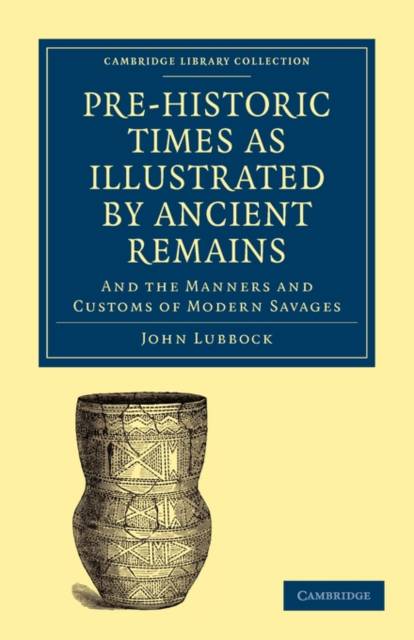
- Afhalen na 1 uur in een winkel met voorraad
- Gratis thuislevering in België vanaf € 30
- Ruim aanbod met 7 miljoen producten
- Afhalen na 1 uur in een winkel met voorraad
- Gratis thuislevering in België vanaf € 30
- Ruim aanbod met 7 miljoen producten
Zoeken
Pre-Historic Times as Illustrated by Ancient Remains, and the Manners and Customs of Modern Savages
Lubbock John, John Lubbock
€ 99,95
+ 199 punten
Omschrijving
Sir John Lubbock (1834-1915) was an English banker who was fascinated with biology and archaeology. He was a close friend of Charles Darwin and a prolific writer who made influential contributions to both of these fields, being appointed the President of the Linnaean Society between 1881-1886. First published in 1865, it was written as a textbook of prehistoric archaeology. It became one of the most influential and popular archaeological books of the nineteenth century, being reissued in seven editions between 1865 and 1913. In this volume Lubbock develops an evolutionary interpretation of archaeology, using prehistoric material remains as evidence that human cultures become more sophisticated over time. He also introduces the division of prehistory, coining the terms Palaeolithic and Neolithic to subdivide the Stone Age. Lubbock's interpretation of cultural evolution was an extremely influential social theory which was widely adopted by contemporary archaeologists and anthropologists.
Specificaties
Betrokkenen
- Auteur(s):
- Uitgeverij:
Inhoud
- Aantal bladzijden:
- 548
- Taal:
- Engels
- Reeks:
Eigenschappen
- Productcode (EAN):
- 9781108017213
- Verschijningsdatum:
- 26/08/2010
- Uitvoering:
- Paperback
- Formaat:
- Trade paperback (VS)
- Afmetingen:
- 140 mm x 216 mm
- Gewicht:
- 689 g

Alleen bij Standaard Boekhandel
+ 199 punten op je klantenkaart van Standaard Boekhandel
Beoordelingen
We publiceren alleen reviews die voldoen aan de voorwaarden voor reviews. Bekijk onze voorwaarden voor reviews.











